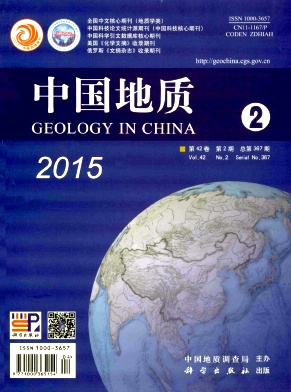GONG Zheng1, LI Hai-bing1, LAO Chang-ling2,3, TANG Li-jun2, LUO Li-qiang2, LI Cheng-long1,3, YUN Kun1,4, ZHANG Jia-jia1,4, WANG Lei-zhen1,3. Real time drilling mud gas records the asymmetric damaging process associated with the 2008 Ms 8.0 Wenchuan earthquake[J]. Geology in China, 2015, 42(2): 480-494.
| Citation: |
GONG Zheng1, LI Hai-bing1, LAO Chang-ling2,3, TANG Li-jun2, LUO Li-qiang2, LI Cheng-long1,3, YUN Kun1,4, ZHANG Jia-jia1,4, WANG Lei-zhen1,3. Real time drilling mud gas records the asymmetric damaging process associated with the 2008 Ms 8.0 Wenchuan earthquake[J]. Geology in China, 2015, 42(2): 480-494.
|
Real time drilling mud gas records the asymmetric damaging process associated with the 2008 Ms 8.0 Wenchuan earthquake
-
GONG Zheng1, LI Hai-bing1, LAO Chang-ling2,3, TANG Li-jun2, LUO Li-qiang2, LI Cheng-long1,3, YUN Kun1,4, ZHANG Jia-jia1,4, WANG Lei-zhen1,3
-
1. Institute of Geology, Chinese Academy Geological Sciences, Beijing 100037, China; 2. Natinal Research Center for Geoanalysis, Chinese Academy of Geological Sciences, Beijing 100037, China; 3. China University of Geosciences, Wuhan 430074, Hubei, China; 4. Chengdu University of Technology, Chengdu 610059, Sichuan, China
-
Abstract
Abstract: A considerable part of energy released during an earthquake is used to create fractures within the surrounding rocks. The real-time drilling mud gas from WFSD-1 shows that the fractures generated during the Wenchuan Earthquake coincide with large fluid peaks, and hence they are favorable passages for underground fluid migrations. The drilling mud gas distributes asymmetrically around the principal slip zone (PSZ), with the major anomaly zone emerging 120 m below the PSZ. Gas concentrations are much higher and vary more intensively than the upper 120 m. Additionally, the geophysical logs also prove that this zone is highly fractured and associated with serious water inrush, suggesting that the 2008 Wenchuan earthquake caused more damage to the footwall than to the hanging wall. The difference in rock strength between the volcanic hanging wall of Pengguan complex and the sedimentary footwall of Xujiahe Formation and the asymmetric stress during the rupture propagation might have contributed to the damage process.
-

-
-
Access History







 DownLoad:
DownLoad: